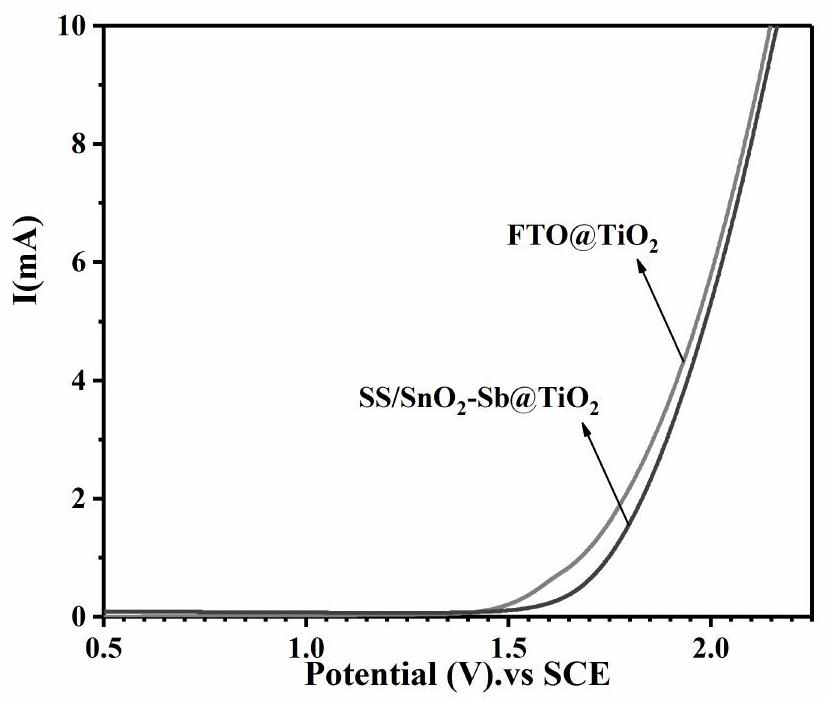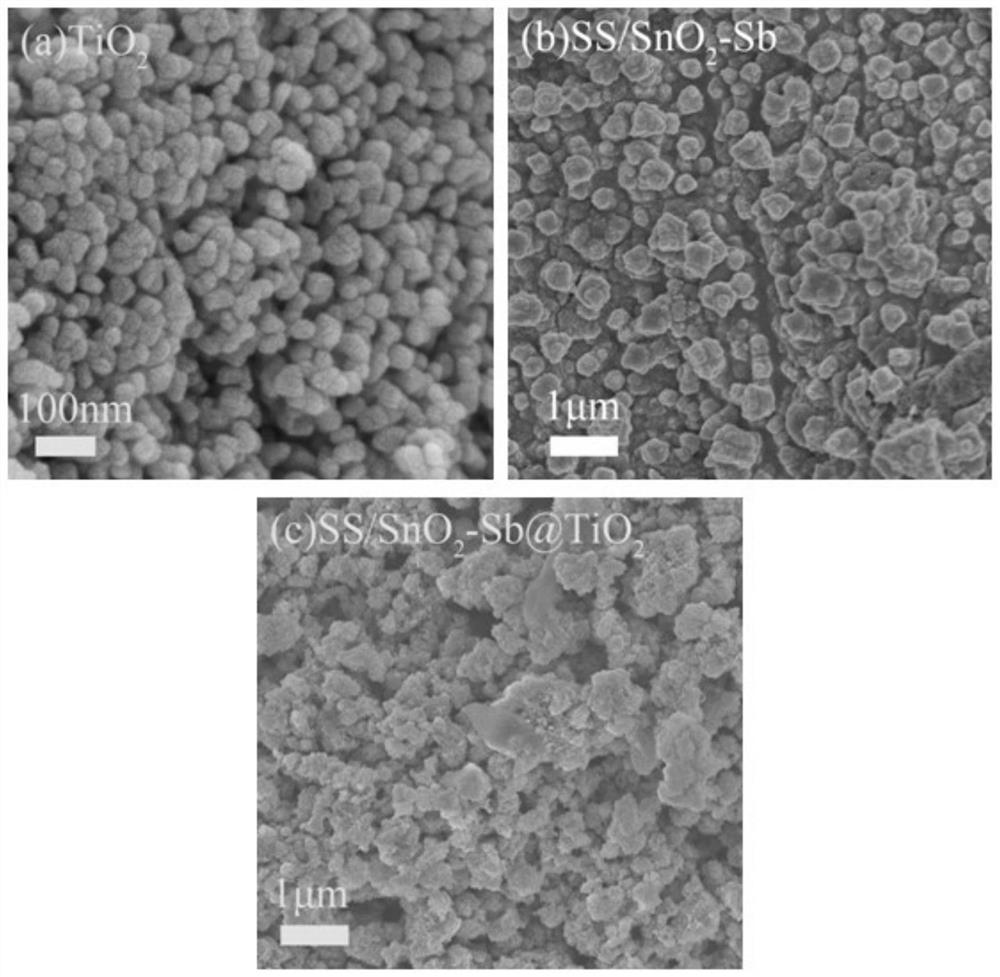Preparation method of doped nano TiO2 photo-anode plate
A photoanode and doping-type technology, applied in chemical instruments and methods, water/sewage treatment, light water/sewage treatment, etc., to achieve the effect of improving service life and increasing service life
- Summary
- Abstract
- Description
- Claims
- Application Information
AI Technical Summary
Problems solved by technology
Method used
Image
Examples
Embodiment 1
[0030] A doped nano-TiO 2 A method for preparing a photoanode plate, comprising the following steps:
[0031] (1) Grinding and cleaning treatment of the stainless steel plate: First, the surface of the stainless steel plate is polished with 600 mesh, 1000 mesh, and 2000 mesh sandpaper in sequence. Solution (volume fraction is 20%) in the cleaning tank soaked 24h, and nitric acid solution is used to remove the surface oxide of stainless steel plate, finally, adopts deionized water to wash, obtains the stainless steel plate after grinding and cleaning;
[0032] (2) Sulfuric acid treatment of stainless steel plate: put the stainless steel plate after polishing and cleaning in step (1) into the reaction tank, soak overnight in 98% concentrated sulfuric acid, then wash with deionized water to obtain stainless steel plate after acid treatment. plate, concentrated sulfuric acid is used to passivate the surface of stainless steel plate;
[0033] (3) Electrolytic treatment of stainle...
Embodiment 2
[0046] A doped nano-TiO 2 A method for preparing a photoanode plate, comprising the following steps:
[0047] (1) Grinding and cleaning treatment of the stainless steel plate: First, the surface of the stainless steel plate is polished with 600 mesh, 1000 mesh, and 2000 mesh sandpaper in sequence. solution (volume fraction is 10%) in the cleaning tank soaked 24h, nitric acid solution is used to remove the surface oxide of stainless steel plate, finally, adopts deionized water to wash, obtains the stainless steel plate after grinding and cleaning;
[0048] (2) Sulfuric acid treatment of stainless steel plate: put the stainless steel plate after polishing and cleaning in step (1) into the reaction tank, soak overnight in 80% concentrated sulfuric acid, then wash with deionized water to obtain stainless steel plate after acid treatment. plate, concentrated sulfuric acid is used to passivate the surface of stainless steel plate;
[0049] (3) Electrolytic treatment of stainless s...
Embodiment 3
[0058] A doped nano-TiO 2 A method for preparing a photoanode plate, comprising the following steps:
[0059] (1) Grinding and cleaning treatment of the stainless steel plate: First, the surface of the stainless steel plate is polished with 600 mesh, 1000 mesh, and 2000 mesh sandpaper in sequence. Solution (volume fraction is 15%) soaked in the cleaning tank of 24h, and nitric acid solution is used to remove the surface oxide of stainless steel plate, finally, adopts deionized water to wash, obtains the stainless steel plate after grinding and cleaning;
[0060] (2) Sulfuric acid treatment of stainless steel plate: put the stainless steel plate after polishing and cleaning in step (1) into the reaction tank, soak overnight in 60% concentrated sulfuric acid, then wash with deionized water to obtain stainless steel after acid treatment. plate, concentrated sulfuric acid is used to passivate the surface of stainless steel plate;
[0061] (3) Electrolytic treatment of stainless ...
PUM
 Login to View More
Login to View More Abstract
Description
Claims
Application Information
 Login to View More
Login to View More - R&D
- Intellectual Property
- Life Sciences
- Materials
- Tech Scout
- Unparalleled Data Quality
- Higher Quality Content
- 60% Fewer Hallucinations
Browse by: Latest US Patents, China's latest patents, Technical Efficacy Thesaurus, Application Domain, Technology Topic, Popular Technical Reports.
© 2025 PatSnap. All rights reserved.Legal|Privacy policy|Modern Slavery Act Transparency Statement|Sitemap|About US| Contact US: help@patsnap.com



